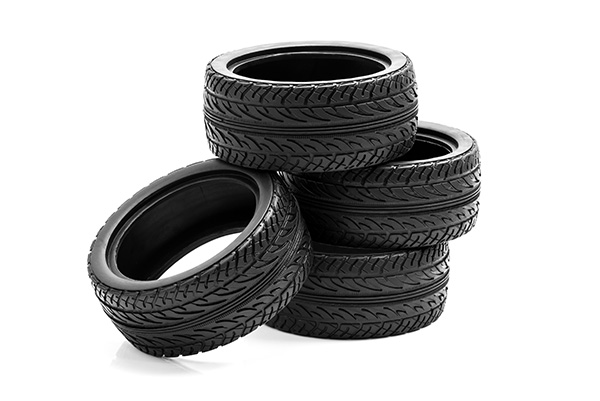
Every time you replace a set of worn-out tires, it’s easy to focus only on the new ones rolling out of the shop. But have you ever wondered what happens to the old rubber left behind? Tires are bulky, non-biodegradable, and filled with materials that don’t break down easily. So where do they go—and can they be put to good use?
Let’s look at the journey your old tires take after they’re replaced and why responsible disposal matters.
The Environmental Challenge of Scrap Tires
Tires are made from synthetic rubber, steel, carbon black, and a host of chemical compounds. While these ingredients make them strong and long-lasting on the road, they also make them challenging to dispose of safely.
Each year, millions of tires are discarded in the U.S. alone. In the past, many ended up in landfills or illegal stockpiles, creating environmental hazards. Piles of scrap tires can attract pests, pose fire risks, and contaminate soil and water.
Fortunately, today’s disposal methods are much more environmentally conscious, with recycling and repurposing programs becoming the norm.
What Happens After You Leave the Shop
When you get new tires at a shop like Morrison Tire Inc., your old ones are usually collected by licensed recycling or disposal companies. From there, the tires may be:
Shredded for Recycling
The tires are chopped into small pieces, separating the rubber, steel, and fiber. These materials are then repurposed for various applications.
Used as Fuel
Some facilities burn shredded tires in cement kilns or industrial boilers. Known as Tire-Derived Fuel (TDF), this method helps reduce reliance on coal or oil.
Ground into Crumb Rubber
Fine rubber particles are used to make playground surfaces, running tracks, and even athletic turf infill.
Repurposed for Civil Engineering
Old tires may be used as drainage layers in landfills, backfill for retaining walls, or road construction materials.
Each method keeps tires out of landfills and helps reduce the demand for new raw materials.
Can Old Tires Be Reused
Yes—in some cases, tires that still have life left in them are retreaded or reused. Commercial trucks often use retreaded tires to save money and resources. Some lightly used tires can also be resold, especially if they were recently installed and show minimal wear.
However, for most passenger vehicles, especially when the tires are worn past their tread limit or have sustained damage, recycling is the safest route.
The Benefits of Tire Recycling
Recycling used tires helps reduce environmental waste, conserve natural resources, and limit pollution. It also creates new products and industries, supporting local economies while improving public health.
For example, recycled rubber has been used in:
- Railroad ties
- Parking bumpers
- Roofing materials
Garden mulch (rubber mulch lasts longer than wood and doesn’t attract insects)
Innovations in rubber recycling continue to grow, offering even more sustainable solutions.
What You Can Do as a Vehicle Owner
If you’re concerned about where your old tires are going, don’t hesitate to ask your repair shop about their disposal practices. Reputable shops collaborate with certified recycling partners and adhere to strict guidelines for environmental responsibility.
It’s also a good idea to avoid dumping tires yourself. Most states prohibit tire disposal in regular trash or landfills, and penalties for improper disposal can be steep.
Tire Replacement and Responsible Disposal at Morrison Tire Inc.
At Morrison Tire Inc. in Garden Grove, CA, we do more than just install new tires. We ensure that your old ones are handled responsibly, with a focus on proper recycling and sustainability. When it’s time for your next set of tires, you can drive away knowing your old ones won’t just sit in a pile—they’ll be put to good use.